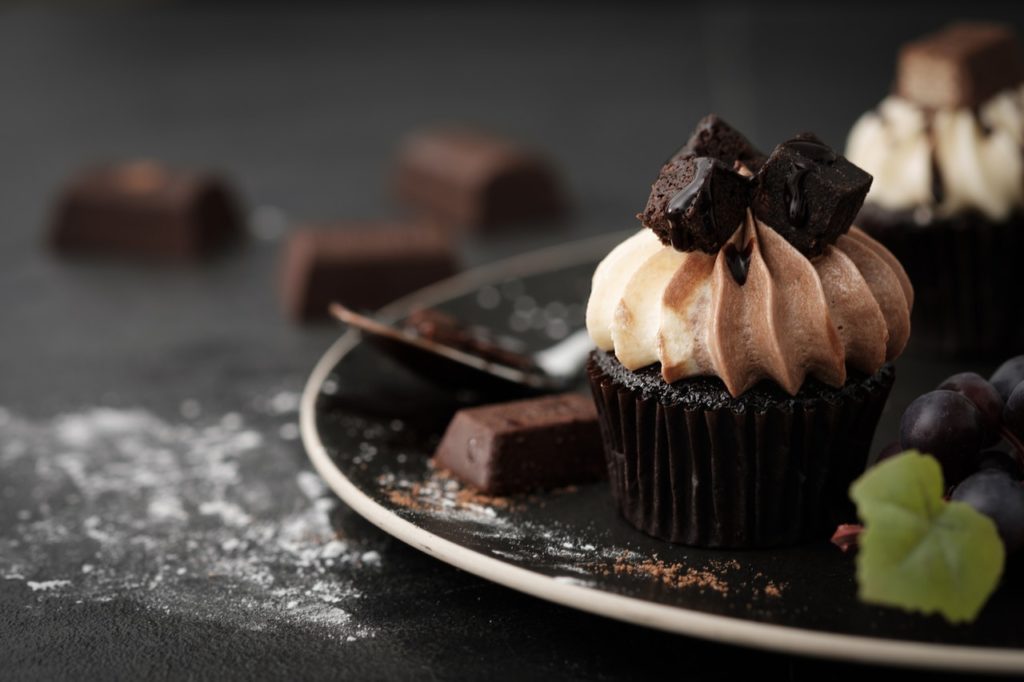It may sound weird, but food photography is very similar to portraiture and as such thinking about a great portrait shot is a great way to improve your food photography. Why? In both cases, the photographer’s task is quite straightforward – the model has to look as attractive as possible!
While portrait photographers need to know how to make their models relax in front of the camera, food photographers have things a little easier but they still have to make sure that the food looks very delicious and inviting.
The following 8 tips can help you improve your food styling and shooting in very simple and undemanding ways:
1. Don’t Crowd Plates With Food
Even though you might be tempted to photograph plates piled with lots of food, an overcrowded plate usually looks tacky and not appealing at all. You should think about negative space when you shoot food – the rules of compositions can help you arrange your subject properly. Think about how you can use the empty space of the plate to frame the food in a creative way.

2. Look For Color Contrasts
There are lots of minimalist images when it comes to modern food photography. These images seem to be influenced by a clean-cut approach used for photographing products such as electronics. While it’s true that this ’’white on white’’ style can be visually striking, it can feel very sterile as well. It feels bolder and more refreshing to look for contrasts. For instance, a pale colored food and plate with a dark background look very vibrant and visually appealing.

3. Use Simple Tableware
Decorative tableware surely looks beautiful on its own, but it can reduce the visual impact of the food. On the other hand, plain white plates and simple tableware allow the food to grab the full attention of the viewer. The exception can be made when photographing simple dishes such as soups and puddings – these two can look really interesting along with some vintage spoon.

4. Emphasize The Natural Looks Of The Food
Every piece of food comes with its own colors and textures you should emphasize and make even more beautiful. You shouldn’t rely on Photoshop to make your food photography great – think about what it is that makes a particular dish look appealing. For example, a crispy skin of a well-roasted chicken looks really delicious and the same goes for the creamy green color of fresh guacamole.

5. Be Mindful Of Composition
Composition always matters a lot! You can use various props or ingredients to create lines and frames in your food photography. For instance, cutlery can help you form a line and direct the viewer straight to the plate with food. You can also use the leaves of culinary herbs and spices such as basil, dill, oregano or rosemary to make a beautiful natural frame around the plate. You can also blur the background to create isolation of the main subject.

6. Use A Window Or A Large Softbox For Lighting
The lighting for food photography shouldn’t be elaborate because complex lighting might look too awkward for this type of photo shoots. Since most people are used to eating food at a table, a way to improve your food photography is to make it look natural so use a large window as a primary source of light.
This type of natural light has the softness, direction and catch lights that look familiar and soothing. In case daylight is not available, a large rectangular softbox can make the artificial lighting appear soft and diffused.

7. Take Photos From Various Angles
Changing up the angles will improve your food photography. You should choose angles depending on the type of dishes or drinks you shoot. Large plates of food usually look better from above (like a steak with vegetables or pizza), layered dishes with bread should be shot from the side (like sandwiches, burgers, and cakes), while drinks look best if shot at a 45-degree angle. Of course, you can always experiment and move the plate around until you find your favorite angles.

8. Hire a Food Stylist
Last but not least, if you feel that your food photography is lacking a punch, you should consider hiring a food stylist. Just like any other professionals, food stylists are specialized in this particular field of photography and they will work their magic to improve your shots. In fact, almost all high-end food photography represents a collaboration between chefs, food stylists, and photographers.

Even though many photographers consider food photography to be cliché, it is certainly necessary, especially on recipe blogs. At the same time, food represents cultural identity and it is also an important element of our everyday small pleasures, which means it’s a vital part of our lives.
It’s challenging to make excellent photographs of food because it’s hard to stand out in a saturated market, but you can surely make your food photographs more remarkable by following these tips and adding your own creative input.







1 Comment
I hadn’t considered the importance of composition in a picture of food, such as using cutlery to point to the item in question to make it stand out. My mother’s looking into ways to revamp her restaurant’s websites, with amazing photography of the various dishes she cooks and serves. I’ll look to hire a food photography service to help her get the shots she desires.